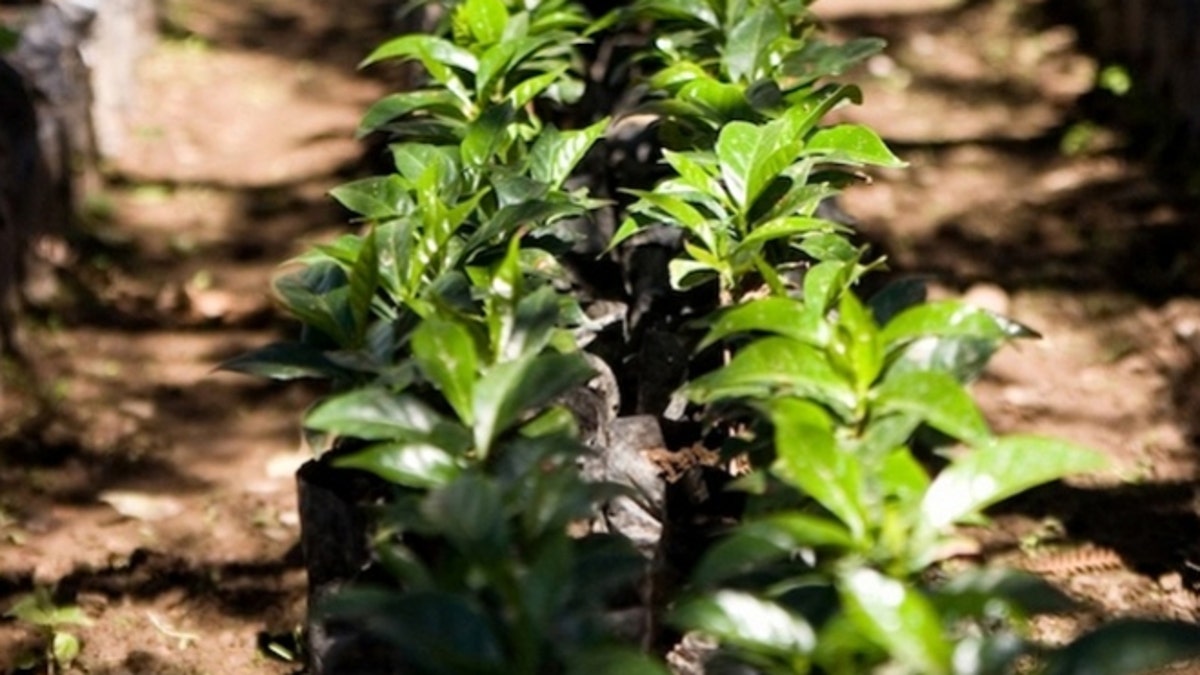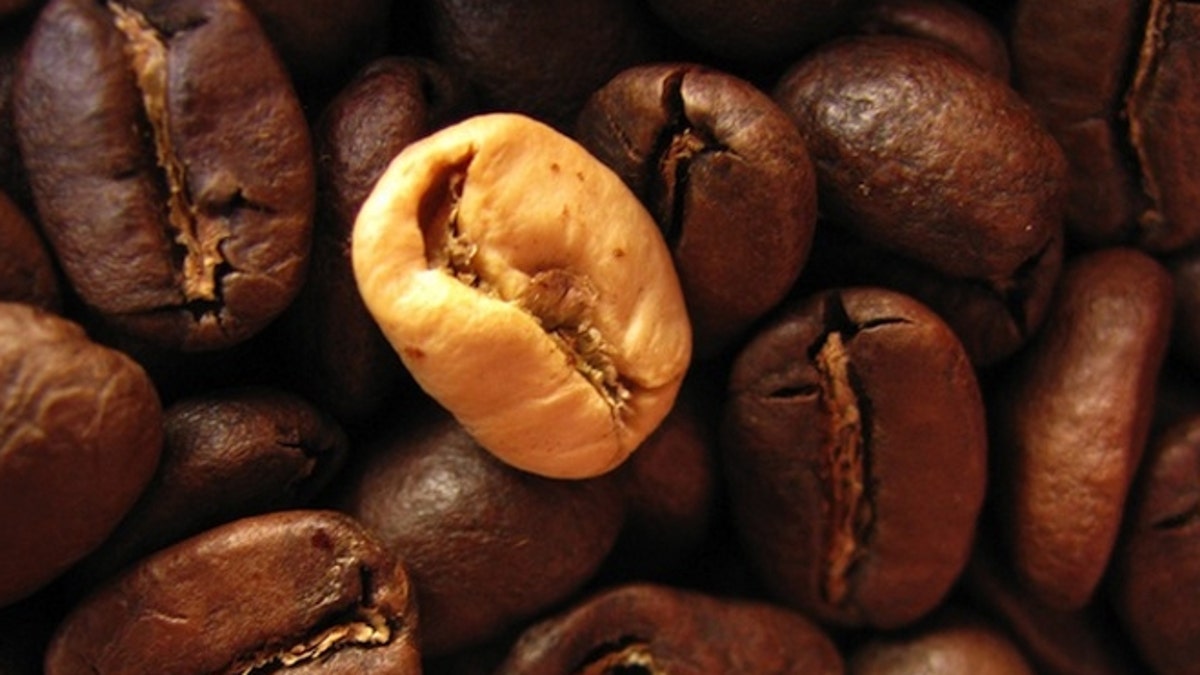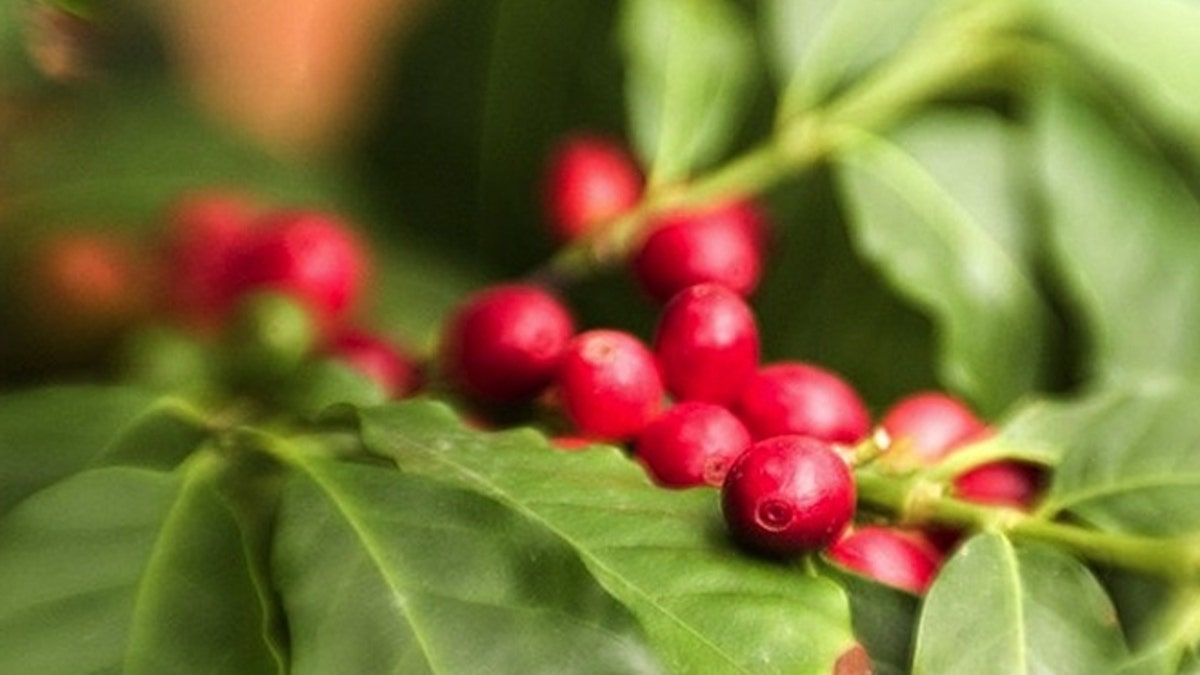If you haven't been keeping up with NPR's Coffee Week lineup of stories, you're missing out on a whole bunch of new insight into the cup of coffee you drink every day. NPR's Coffee Week coverage is dripping with news and facts about the culture of coffee, from the journey of coffee production from fruit to cup to the threats facing coffee plant genes, and more.
It's not often that we think exactly about how our coffee ends up in our cup, and it's a long, lengthy journey. As writer Dan Charles explains, the coffee exports from the "coffee belt" of the world help prop up many of the tropical countries, where exports of green coffee beans add up to $15 billion per year. And considering that one Arabica coffee tree produces only 1 to 1.5 pounds per year, it takes a lot of care to keep up with the demands of coffee drinkers (in Nordic countries, it can reach up to eight cups of coffee per day). And the complexities of the coffee bean — and the leaf rust that's threatening to wipe out coffee farms worldwide — make coffee as interesting of a crop as any other.
And more importantly, as writer Allison Aubrey notes, is how third-wave coffee production is not just giving drinkers a better-tasting cup of coffee; it's allowing farmers to reinvest in their farms and provide better working conditions for those producing the coffee. From sorting and drying the beans to just getting the beans to a port to be shipped to the U.S. and other countries, the process of coffee is labor-intensive. Aubrey puts it best: "So, next time you sip on a latte, remember: It's not just the face of the barista behind those coffee beans."
We asked Charles and Aubrey to share with The Daily Meal the most surprising facts they discovered about coffee production; you can click ahead to find out more eye-opening tidbits about your coffee. Let's just say, you'll appreciate your morning caffeine jolt that much more.
1. Cultivated Coffee

(The Daily Meal)
"Cultivated coffee is really not very different from trees that you can find growing wild in the forests of East Africa. The two species that are grown commercially (Coffea arabica and Coffea canephora) also grow wild, as do many other closely related species."
— Dan Charles, NPR
2. Genetics

(The Daily Meal)
"On the other hand, most cultivated coffee is descended from only a few samples of that wild genetic diversity — the samples that people selected centuries ago and carried with them to today’s major coffee-growing regions. The scientists describe this as coffee going through a 'genetic bottleneck' as it moved from its African homeland to Latin America, in particular."
— Dan Charles, NPR
3. Cherry Beans

(The Daily Meal)
"I had no idea that coffee plants produce cherries. What we know as ‘the beans’ are inside the cherries. In order to extract the beans, they’ve got to be milled to remove the cherry pulp... And I bit into one of the cherries on Miguelina’s [the farmer profiled in NPR's story] farm, It was a little sweet — not as sweet as cherries, but definitely fruity, and tasty."
— Alison Aubrey, NPR
See all 7 facts at The Daily Meal
More from The Daily Meal
Crazy Ways to Get Your Caffeine Fix
New Starbucks Drinks Rolling Out
Coffee vs. Tea: What You Should Drink for the Most Health Benefits
